GIMP
News
Docs
Tutorials
More
Text and images Copyright (C) 2002 Dave Neary and may not be used without permission of the author.
Tutorial on how to make a nice baby & daddy photo into a nice baby & daddy painting.

Nice picture of a baby & dad. Ah.

Straightforward Sobel edge detect (
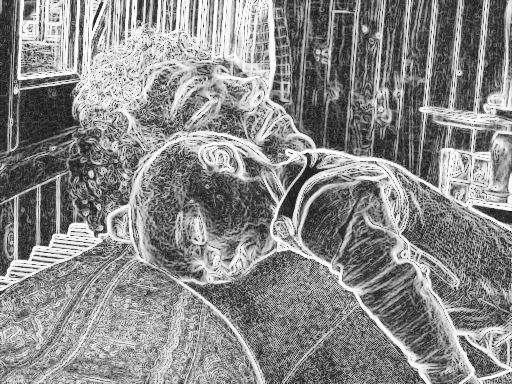
Bring out detail with an auto-equalise (
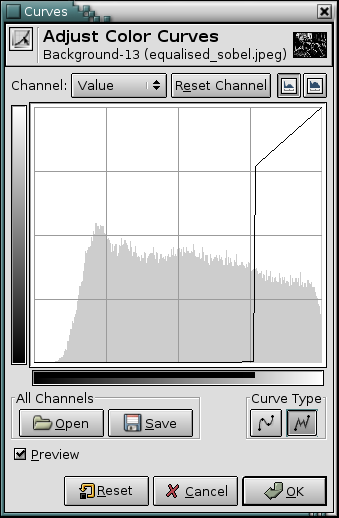
We only want the strong edges, otherwise it’ll look crap. To get them, we eliminate the edges with small magnitude. The easiest way to do this is with the curves tool (
We set the curve type to free (which allows discontinuities), and then for the bottom 3/4 of the curve (or thereabouts) to 0. Just drag the mouse/pen along the bottom of the curves tool.
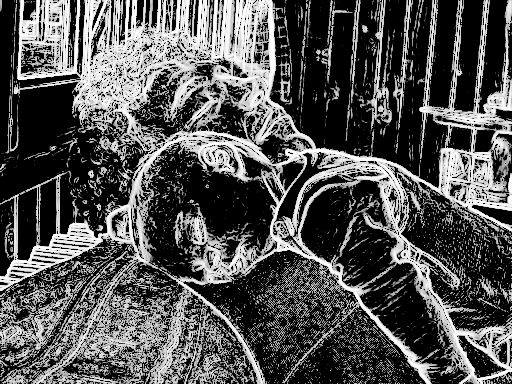
The result is much cleaner. The only problem is it’s white-on-black, when we want black-on-transparent ideally.
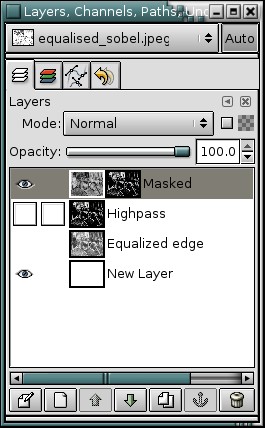
Small trick to get to black-on-transparent. Invert the Sobel edge detect (you did keep a copy, right?) with
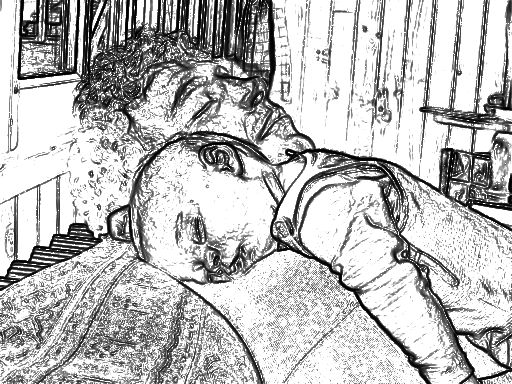
This is the result of the trick above. It’s shown here with a white layer behind it. We could stop here, and this is a decent sketch effect. For the colouring, we need some more work (mostly slogging, though).
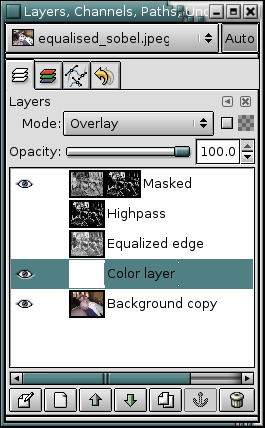
We put our original image back in the background, and set the white layer to overlay (as we see here) - this means we can see the coloured areas behind the white layer - this is extremely helpful when we’re painting the white layer, as sometimes the edges are rather fine, or are in the middle of an area that’s more or less the same colour.
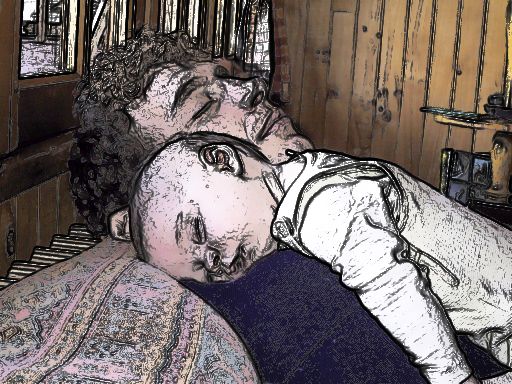
Using the colour-picker tool (looks like an eye-dropper), we select the colour we want to paint from the original image (just activate the “original image” layer and try to pick a colour representative of an area), and then we re-activate our colouring layer, which is still in overlay mode. Using a big brush (with the brush tool for more natural edges) we fill in the area of that colour roughly (doesn’t have to be perfect). You should see the colour darkening as we draw with a colour similar to the background colour.
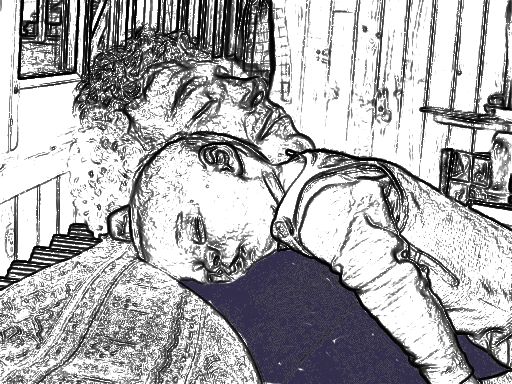
This is what we see if we set the colour drawing layer to normal mode. And we’re on our way.
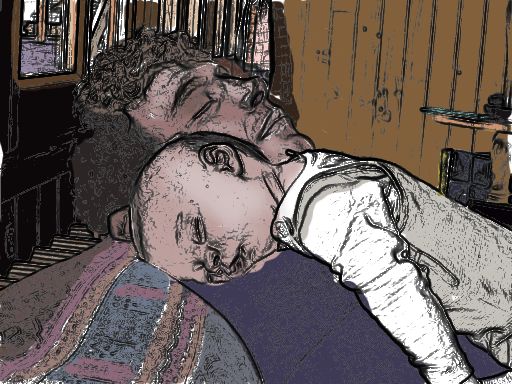
After some effort, all the regions get filled in. Final touches to make faces and the like look better for shadows and highlights were accomplished by selecting a representative shadow/highlight colour, and adding the extra bits with the airbrush tool (looks like an airbrush). After all our work, we end up with this very nice looking painting effect.